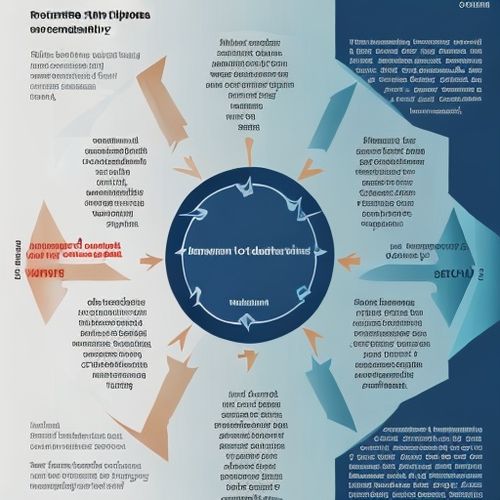The capital market serves as the backbone of modern economies, facilitating the efficient allocation of financial resources between savers and borrowers. Its significance extends far beyond mere trading floors and stock tickers, embedding itself deeply into the economic fabric of nations. By enabling companies to raise long-term funds and providing investors with opportunities to grow their wealth, capital markets act as a bridge between present financial capabilities and future economic aspirations.
At its core, the capital market operates through a complex interplay of primary and secondary markets. The primary market deals with the issuance of new securities, allowing corporations and governments to secure funding for expansion, infrastructure projects, or debt management. This process of capital formation is crucial for economic development, as it transforms savings into productive investments. The secondary market, where existing securities change hands, provides liquidity and price discovery mechanisms that make the entire system function smoothly.
Economic growth finds one of its most reliable allies in well-functioning capital markets. When businesses can access funding beyond traditional bank loans, they gain flexibility in pursuing innovative projects and scaling operations. This democratization of finance breaks down barriers that once limited growth to only the most established corporations. Startups and mid-sized enterprises now compete on more equal footing, fostering entrepreneurship and job creation across various sectors.
The pricing mechanism within capital markets serves as an economic barometer, reflecting collective wisdom about company valuations and broader economic conditions. Share prices incorporate vast amounts of information, from macroeconomic trends to industry-specific developments, creating a continuous feedback loop for market participants. This price discovery process helps direct capital to its most productive uses, rewarding efficient businesses while penalizing underperformers.
Risk distribution represents another critical function of capital markets. Through sophisticated financial instruments and diversified investment vehicles, the system allows participants to spread and manage risk according to their preferences. Pension funds seeking stable returns, venture capitalists pursuing high-growth opportunities, and individual investors balancing their portfolios all find tools tailored to their needs within modern capital markets.
Globalization has transformed capital markets into interconnected networks that transcend national borders. Foreign direct investment and cross-border portfolio flows have created new channels for economic development, particularly in emerging markets. This international dimension brings both opportunities and challenges, as capital movements can quickly respond to changing global conditions, sometimes creating volatility alongside growth prospects.
The regulatory framework surrounding capital markets plays a pivotal role in maintaining confidence and stability. Effective oversight balances the need for investor protection with market efficiency, preventing abuses while encouraging innovation. From disclosure requirements to trading rules, these governance structures evolve alongside market developments, aiming to prevent excesses while preserving the dynamism that makes capital markets effective.
Technological advancements continue reshaping capital markets at an accelerating pace. Electronic trading platforms, algorithmic strategies, and blockchain applications are transforming how securities are issued, traded, and settled. These innovations promise greater efficiency and accessibility but also introduce new complexities and potential vulnerabilities that market participants must navigate.
The social impact of capital markets often goes underappreciated. By enabling retirement savings to grow and providing mechanisms for wealth creation beyond traditional employment income, these markets contribute to broader financial inclusion. The ability to participate in economic growth through investment vehicles has become an important component of personal financial planning for millions worldwide.
As economies face new challenges from climate change to demographic shifts, capital markets will play an increasingly important role in funding solutions. Green bonds financing renewable energy projects, social impact investments targeting underserved communities, and other innovative instruments demonstrate how market mechanisms can align with societal priorities. This evolution suggests capital markets will continue adapting to serve both economic and broader human development goals.
The relationship between capital markets and monetary policy has grown more intricate in recent decades. Central bank actions ripple through financial markets, affecting asset prices and investment decisions across the economy. This interconnection means that capital market participants must constantly assess policy directions while policymakers monitor market reactions to their decisions, creating a complex feedback loop between financial markets and economic management.
Looking ahead, capital markets face both opportunities and challenges in an era of rapid technological change and geopolitical uncertainty. The continued development of these markets will require balancing innovation with stability, global integration with local needs, and profit motives with social responsibilities. Their ability to evolve while maintaining core functions will determine how effectively they can support economic progress in coming decades.

By Noah Bell/Apr 10, 2025

By Victoria Gonzalez/Apr 10, 2025

By John Smith/Apr 10, 2025

By Sarah Davis/Apr 10, 2025

By James Moore/Apr 10, 2025

By John Smith/Apr 10, 2025

By Ryan Martin/Apr 10, 2025

By Benjamin Evans/Apr 10, 2025

By Emma Thompson/Apr 10, 2025

By Megan Clark/Apr 10, 2025

By Thomas Roberts/Apr 10, 2025

By Noah Bell/Apr 10, 2025

By George Bailey/Apr 10, 2025

By Daniel Scott/Apr 10, 2025

By Benjamin Evans/Apr 10, 2025

By Amanda Phillips/Apr 10, 2025

By Sophia Lewis/Apr 10, 2025